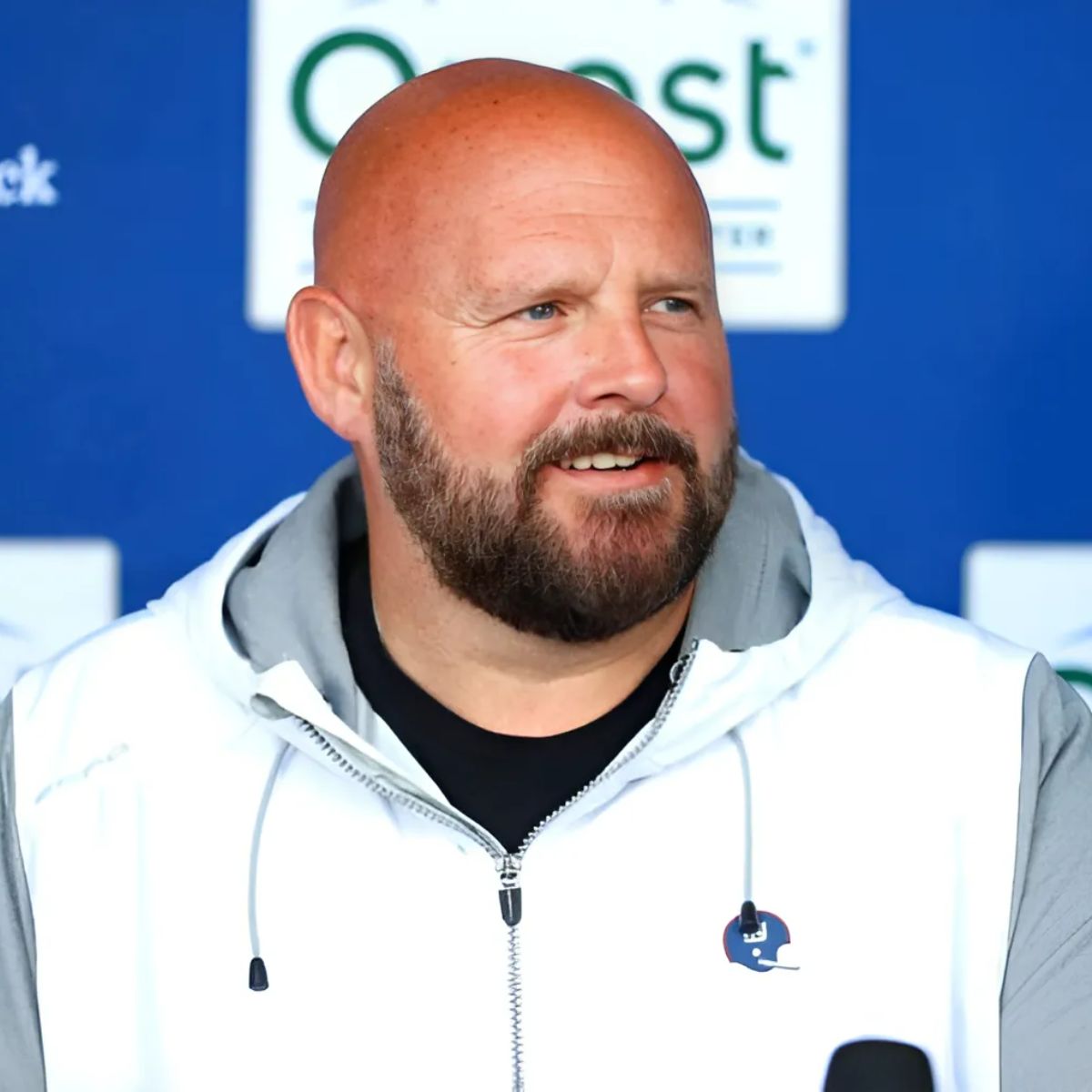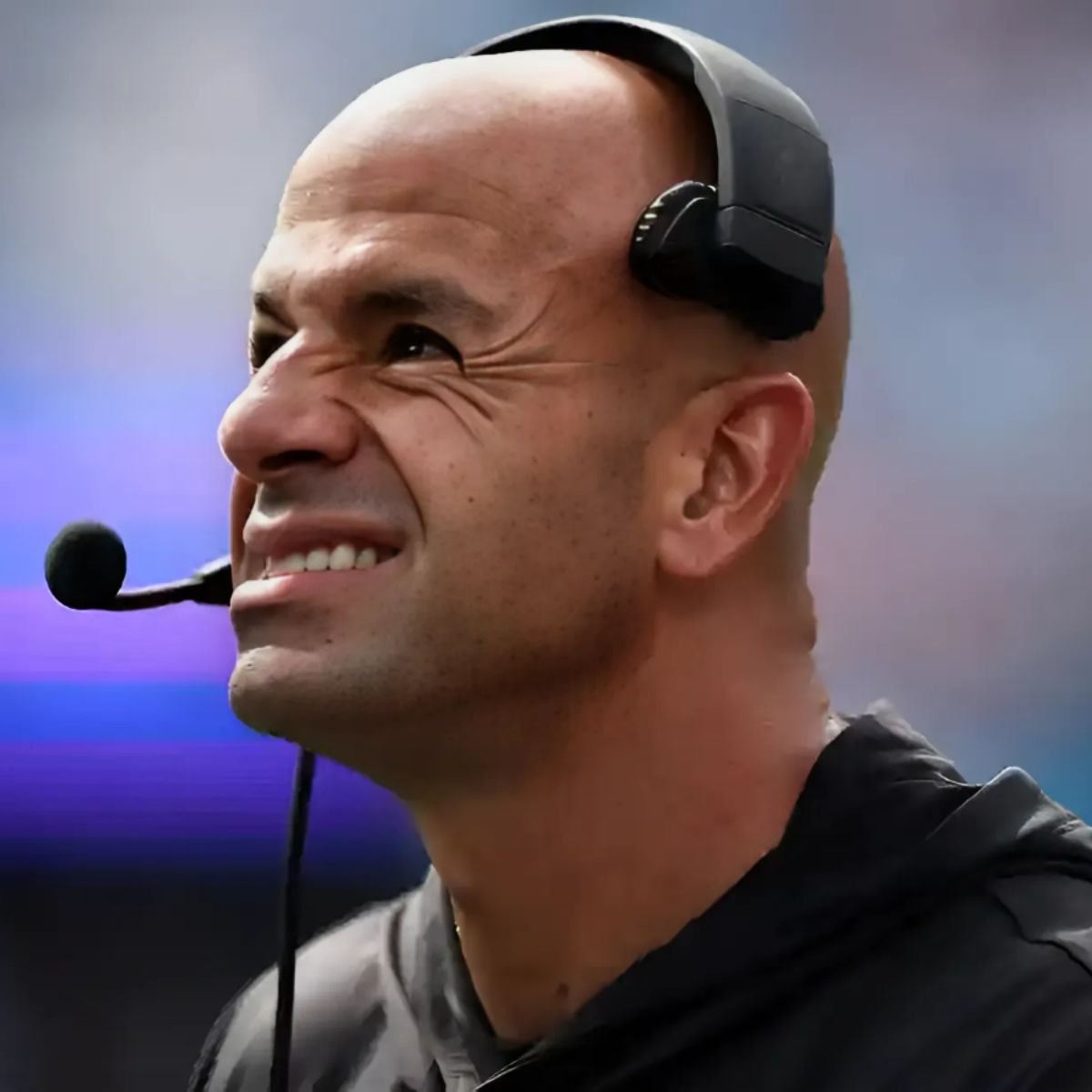Icon Sportswire/Icon Sportswire via Getty Images
Texans general manager Nick Caserio didn’t trade into the first round, but he’ll likely have his choice of picks Friday.
After a flurry of offensive players came off the board early in the first round, the top defensive players were pushed down in the draft, meaning the Texans, if they choose, could be in line for a player who was valued higher than the number he was picked.
The first 14 players in the 2024 draft were offensive players, including six quarterbacks, who were taken in the first 12 picks. That was a draft record.
Article continues below this ad
Here are the top remaining players on the board:
Prospects to consider at No. 42
Jer’Zhan Newton, DT, Illinois: Defensive tackle is arguably the Texans’ biggest need after they did not get a big-name target in free agency. The rub with Newton is that he might not make it to No. 42. He’s that good, and there are so few with top-end talent at his position in this draft class. He was initially thought to go in the first round but didn’t. The Texans ought to consider moving up seven spots with the Cardinals at 35 and taking him. Newton, who is 6-2, 280 pounds, had 52 tackles, 8½ tackles for loss and 7½ sacks last season. He was voted first-team All-American and Big Ten defensive player of the year.
Ryan Kang/Getty Images
Kool-Aid McKinstry, CB, Alabama: McKinstry was projected to go in the first round. He was a first-team Associated Press All-American and first-team All-SEC. He started all 14 games for the Crimson Tide, where DeMeco Ryans went to school, and made 32 tackles with seven pass breakups. He’s 6-0, 199 pounds, and could immediately come in to compete for a starting cornerback spot opposite of Derek Stingley Jr.
Article continues below this ad
Cooper DeJean, DB, Iowa: Can play safety, slot and cornerback. DeJean was a first-team All-American. He allowed only one touchdown in coverage over the last two years at Iowa, according to PFF. He had five interceptions in 2022, including three returned for touchdowns and two interceptions in 2023. He also brings special-teams value as a return man.
Don Juan Moore/Getty Images
Braden Fiske, DT, Florida State: Early on, many draft evaluators had Fiske as a late first-round pick, but he’s dropped on some draft boards as of late. He could be available when the Texans pick at 42. The 6-4, 292-pound tackle ran a 4.78 in the 40-yard dash at the combine, which was the fastest of all DTs. I asked an AFC assistant coach about Fiske, and he said, “The guy plays like his hair is on fire every snap. He plays hard, and you know what you are getting when he walks in the door.” The most common criticism I’ve seen is his shorter-than-normal arm length (31 inches), which could hurt his ability to get off blocks in the NFL.
Ennis Rakestraw, CB, Missouri: Most mock drafts had Rakestraw as a late day one or early day two pick. CBS Sports’ Ryan Wilson told me he’d be shocked if Rakestraw fell all the way to 42, but it’s not out of the question. I posed this question to Wilson, though: If Edgerrin Cooper, Max Melton and Kamari Lassiter are all on the board, who is he taking? He said Rakestraw. “Rakestraw is undersized and wasn’t an elite tester, but his game reminds me of (Seattle’s) Devon Witherspoon in that he plays cornerback like a linebacker,” Wilson said. The Dallas native is 6-0, 187 pounds.
Prospects to consider at No. 59
Kamari Lassiter, CB, Georgia: I picked Lassiter for the Texans in my first two mock drafts after they traded their first-round pick to Minnesota for No. 42. He is expected to be available at No. 42 and maybe even at No. 59. The Georgia cornerback, who is 6-0, 180 pounds, didn’t have many interceptions or takeaways during his time with the Bulldogs, but he was still a shutdown cornerback. He allowed only 136 passing yards all season, which was lowest among FBS cornerbacks.
Justin Casterline/Getty Images
Michael Hall Jr., DT, Ohio State: Hall is a little undersized (6-2, 299), but there are some in the Texans organization who like his talents. At 20, he’s one of the younger players in the draft, so he has time to develop. He had six sacks between the 2022 and 2023 seasons. He’ll probably be drafted somewhere in the 42-60 range, depending on where teams value him. There isn’t a lot of supply at defensive tackle, so he could be drafted earlier than expected. He’s better value at 59, though.
T.J. Tampa, CB, Iowa State: I had Tampa in my latest mock draft because he had a top-30 visit with the Texans, so there was at least some interest there. Tampa is expected to go from anywhere late in the first round to late in the second round. At 6-2, 200 pounds, he has great size for a cornerback and was first-team All-Big 12 last season. He ran a 4.55 at his pro day, which isn’t ideal for a cornerback. But he’s talented. He had two interceptions and seven pass breakups in his final season at Iowa State.
Icon Sportswire/Icon Sportswire via Getty Images
Mike Sainristil, CB, Michigan: Sainristil, who is 5-9, 182 pounds, could immediately come in and compete for the starting nickel role. He started 15 games for national champion Michigan, amassing six interceptions, third best in the nation. He returned two of those for touchdowns. What’s clear about Sainristil is he knows how to find the ball.
Tyler Nubin, S, Minnesota: I’ve seen Nubin predicted to go anywhere in the second and third rounds. That’s a huge range. But fewer mock drafts have him in the third round. Nubin is a playmaker. At 6-1, 199 pounds, he has great size for a safety. He was a playmaker the entire season, earning second-team AP All-American honors. He set a school record with 13 career interceptions, including five during his final season, when he was tied for sixth in the country.
Icon Sportswire/Icon Sportswire via Getty Images
Javon Bullard, S, Georgia: Bullard could be an option at No. 42 or No. 59. Ryans has said he’d like to upgrade his safety room after struggles last season and multiple injuries. Three safeties finished the year on injured reserve. Bullard was a huge piece to Georgia’s defense, which has consistently been among the best in the country. The 5-10, 198-pound safety had 56 tackles, two interceptions and five pass deflections last season. He’s one of the top three safeties in this draft class.
Kingsley Suamataia, OT, BYU: Suamataia is projected to go somewhere in Round 2. The Texans have their starters at both tackle spots — Laremy Tunsil and Tytus Howard — for the next two seasons. But they need depth and a potential future replacement. It’s likely not their top need, but they brought in Suamataia for a top-30 visit. At 6-5, 326 pounds, he is similar in size and put up similar numbers at the combine to his cousin, Penei Sewell, who on Wednesday became the highest-paid offensive lineman in NFL history, surpassing Tunsil.
Ric Tapia/Getty Images
Roger Rosengarten, OT, Washington: As I noted in my final mock draft Wednesday, Rosengarten in 2023 played for the nation’s top offensive line, which helped the Huskies reach the national championship game. He started all 15 games at right tackle and would be a good depth piece for the Texans, who are thin at the position. The Texans hosted Rosengarten on a top-30 visit. At 6-5, 308 pounds, he ran a 4.92 in the 40-yard dash at the combine, which was fastest among offensive linemen. He could go anywhere in the second or third round.
Patrick Paul, OT, Houston: Paul, who is 6-7, 315 pounds, will likely be a second-round pick, given the expected run on offensive tackles in the draft. He’s from Houston and stayed here for college. He was a first-team All-Big 12 selection and allowed only one sack all season with 470 pass block snaps, according to PFF.
Icon Sportswire/Icon Sportswire via Getty Images
Edgerrin Cooper, LB, Texas A&M: Cooper has first-round talent but will likely go somewhere in the second because teams don’t typically take linebackers in the first round anymore. Cooper could come in and compete as a starter for the Texans’ SAM linebacker position after Blake Cashman left via free agency. In 12 starts for the Aggies last season, Cooper had 84 tackles, 17 tackles for loss and eight sacks, and was tied for the team lead with two forced fumbles. He’s a dynamic player, but the Texans’ need for a linebacker isn’t as great as their need for a cornerback, defensive tackle and safety.
Payton Wilson, LB, N.C. State: Wilson could be available at 42 or 59. He’s considered one of the top inside linebackers in this draft class. He tested well at the NFL combine but has an injury history. He played six seasons at N.C. State, so long that I covered his high school recruitment when I worked in North Carolina. He was one of the best prospects in the country coming out of high school.




